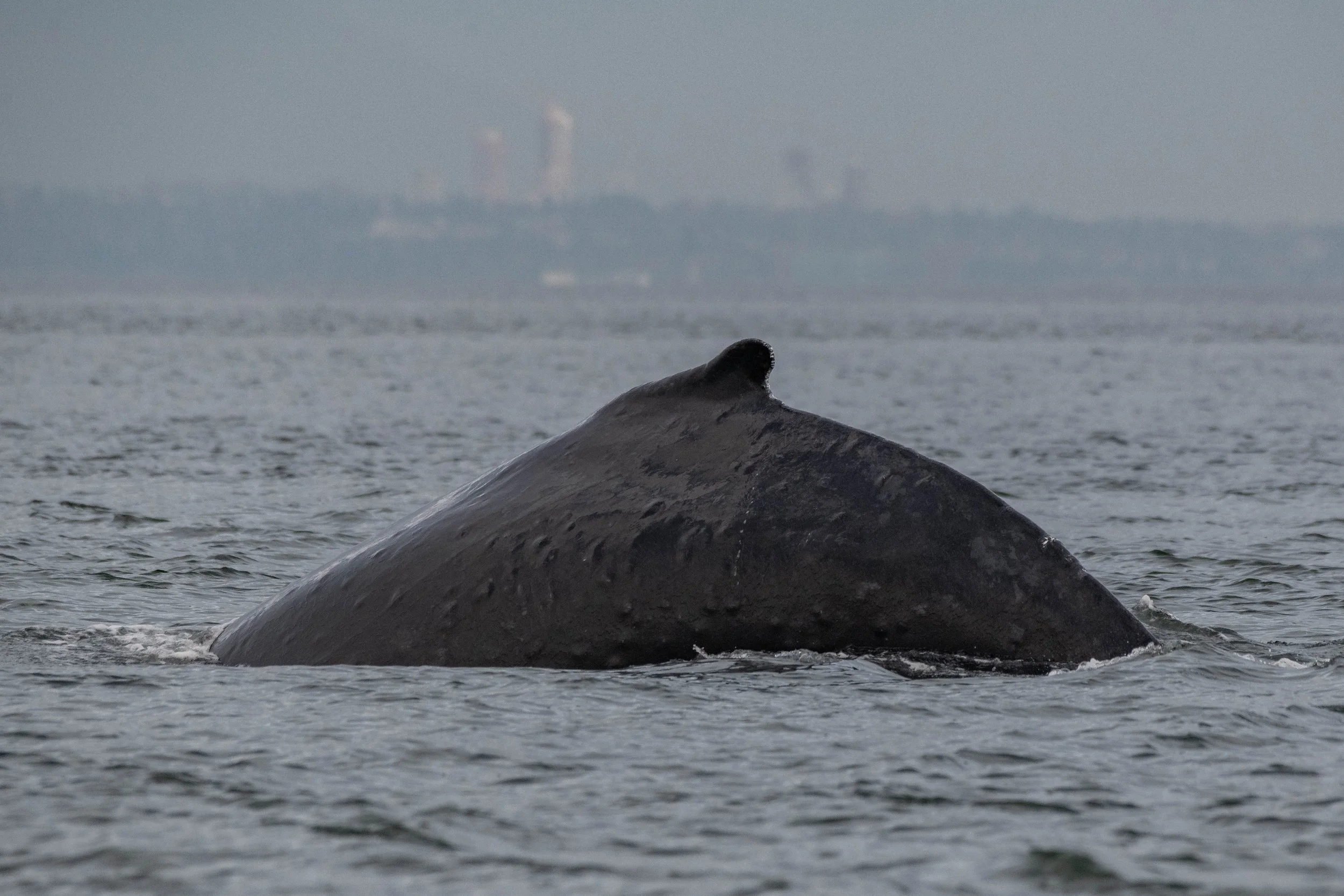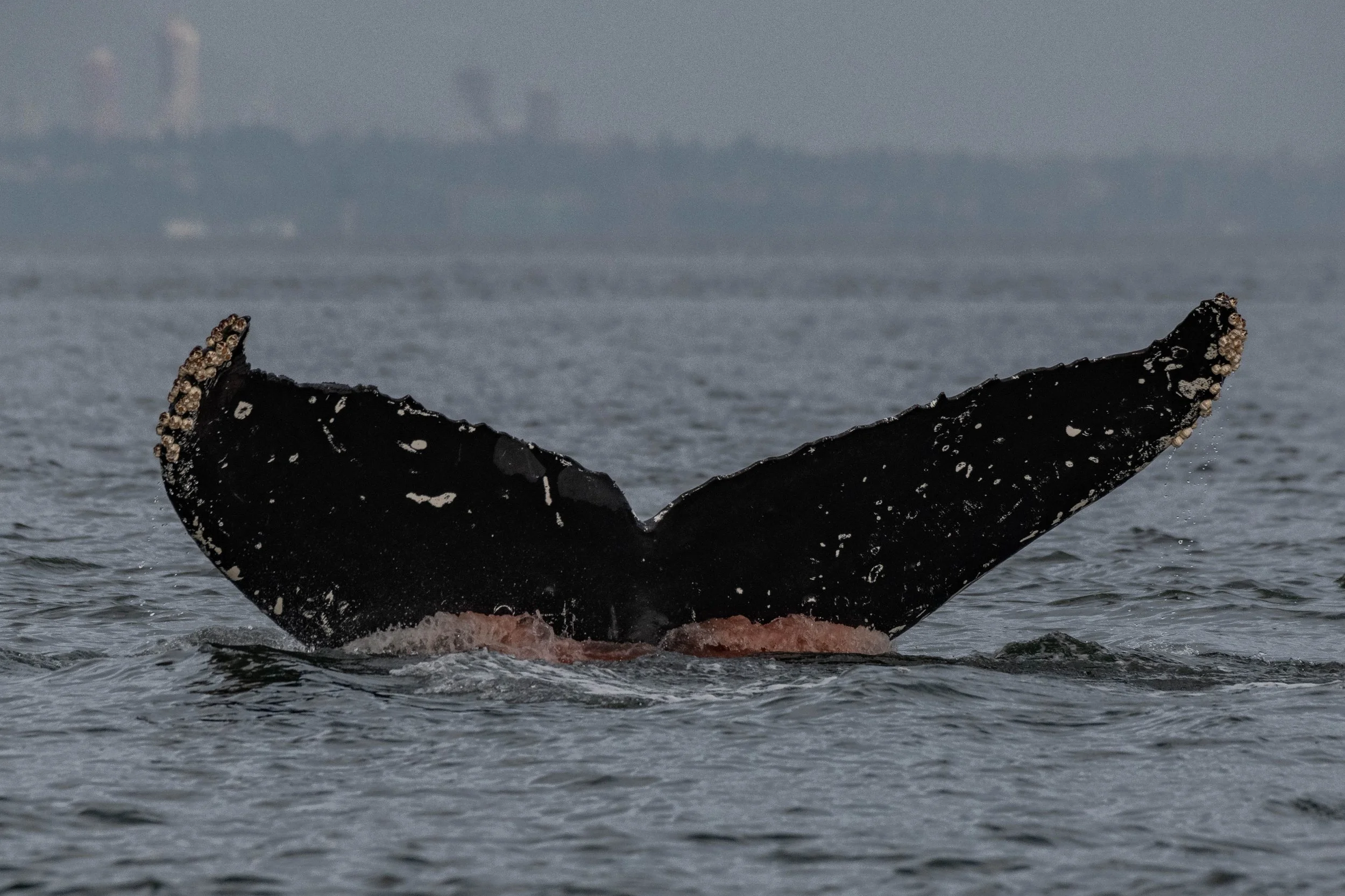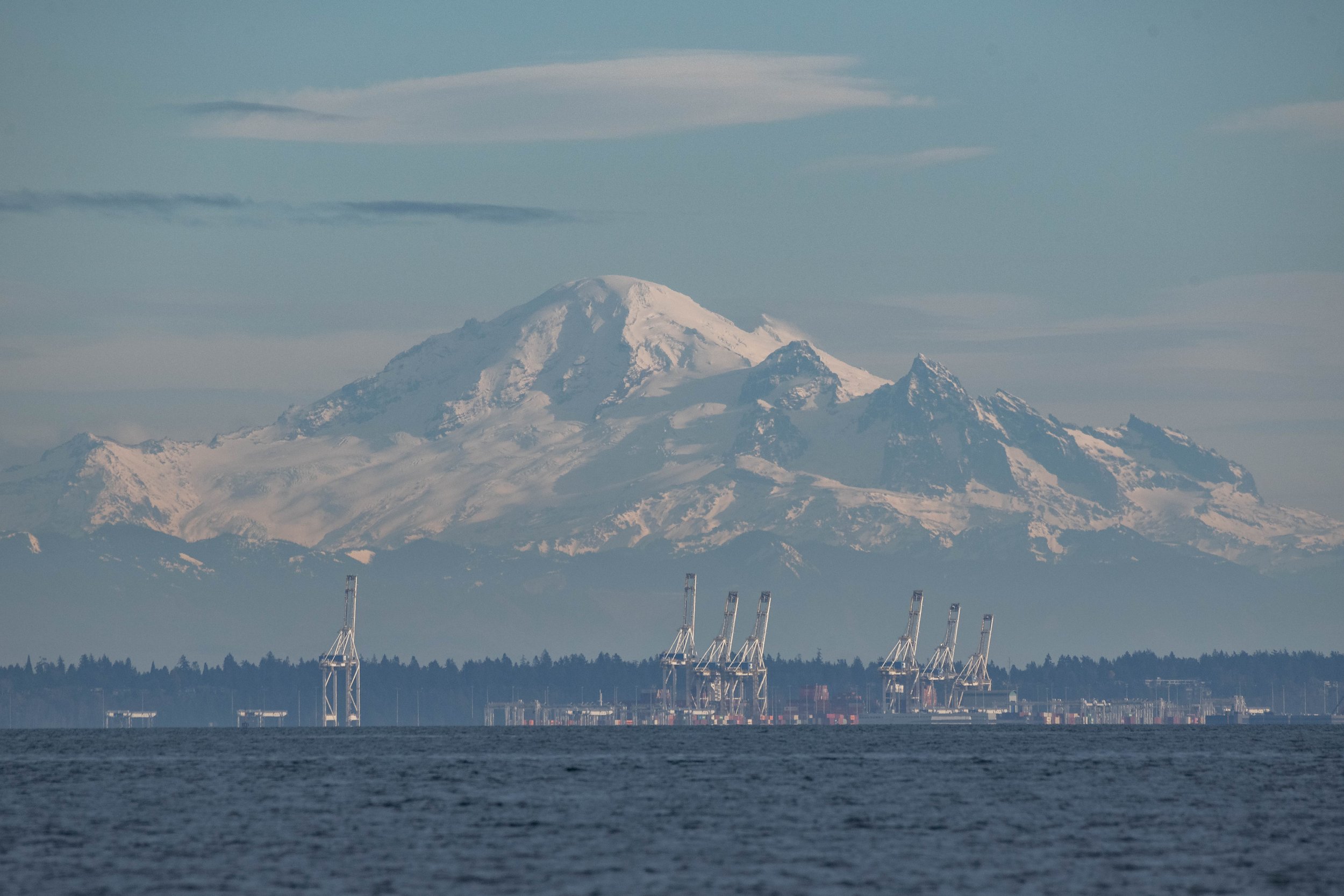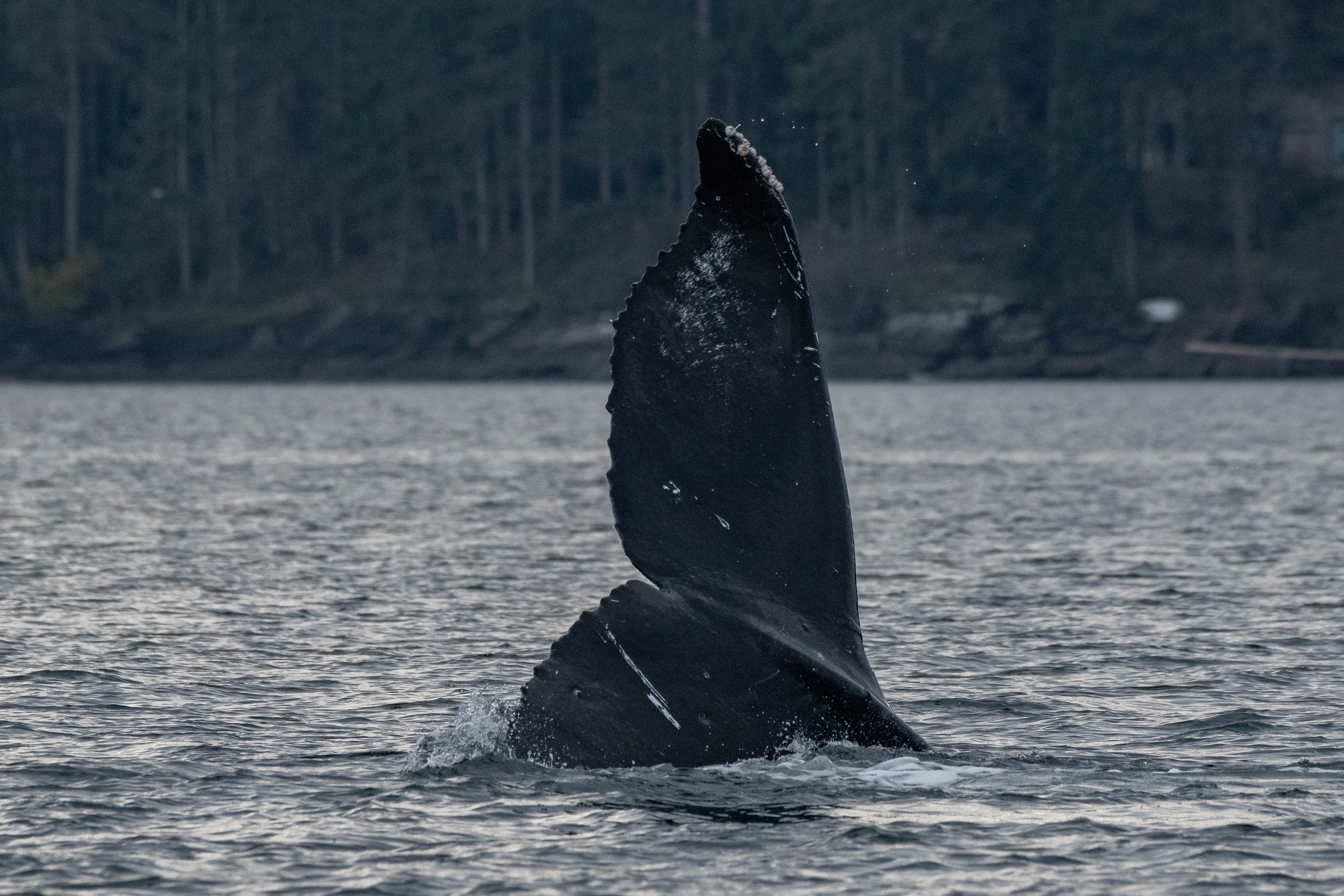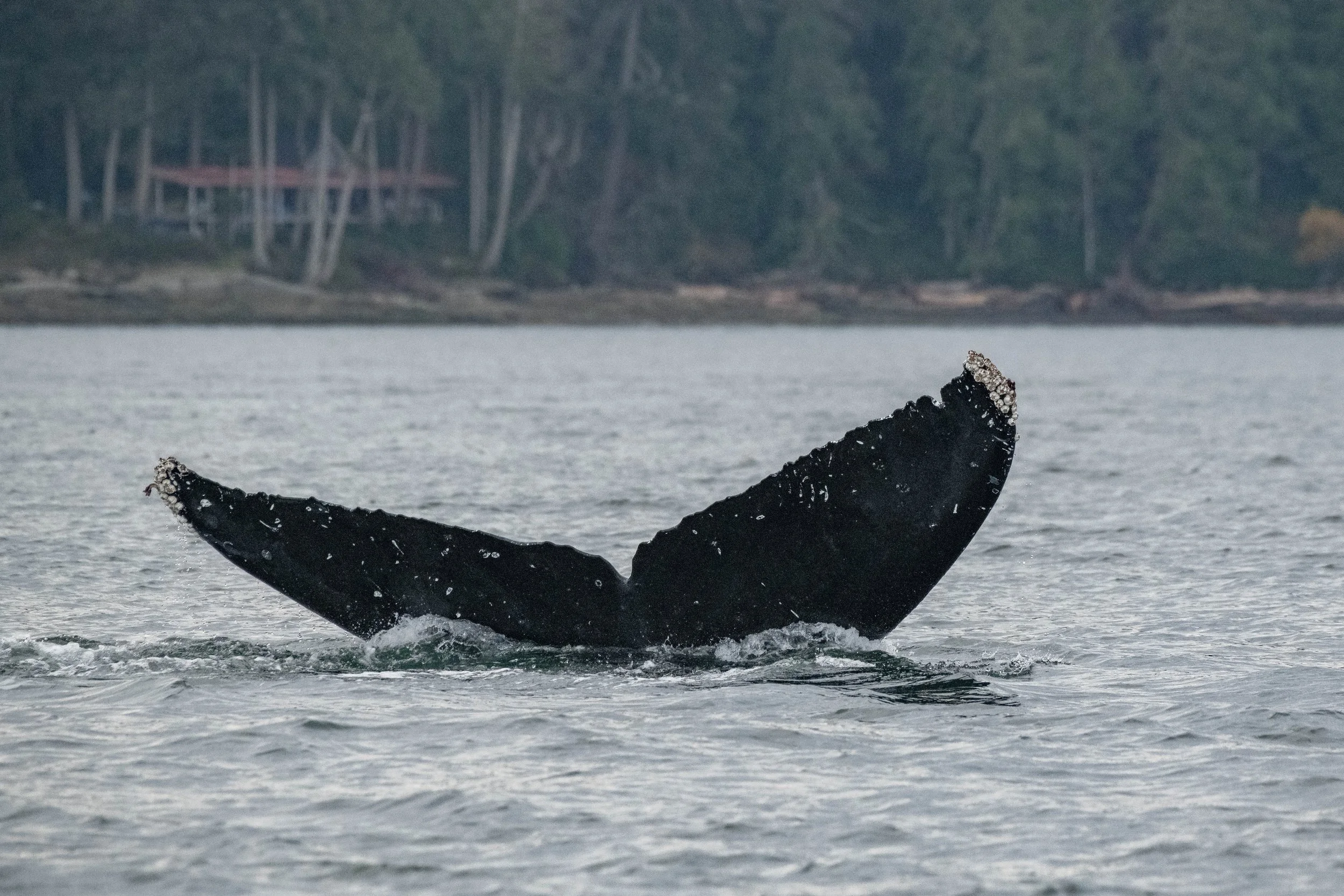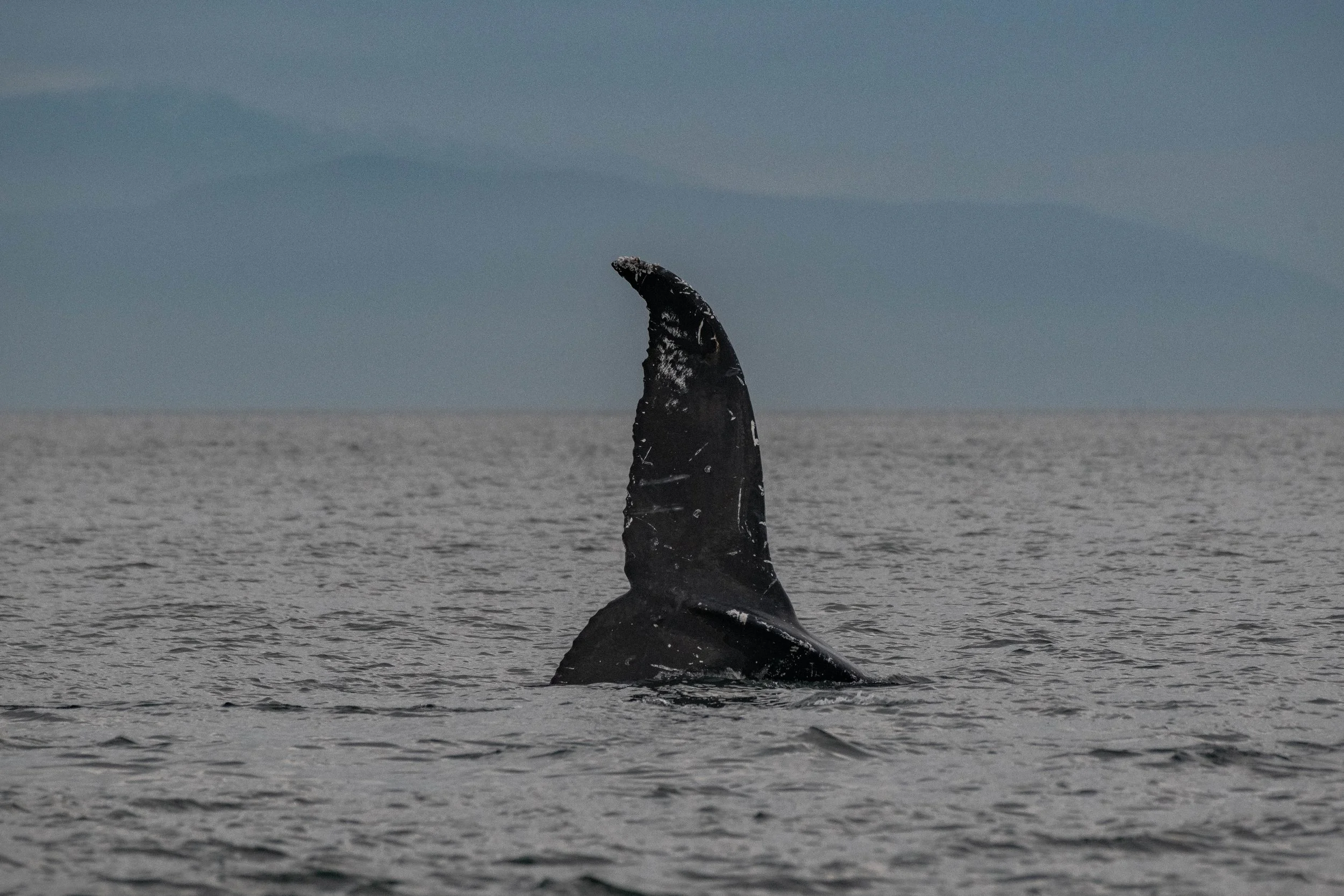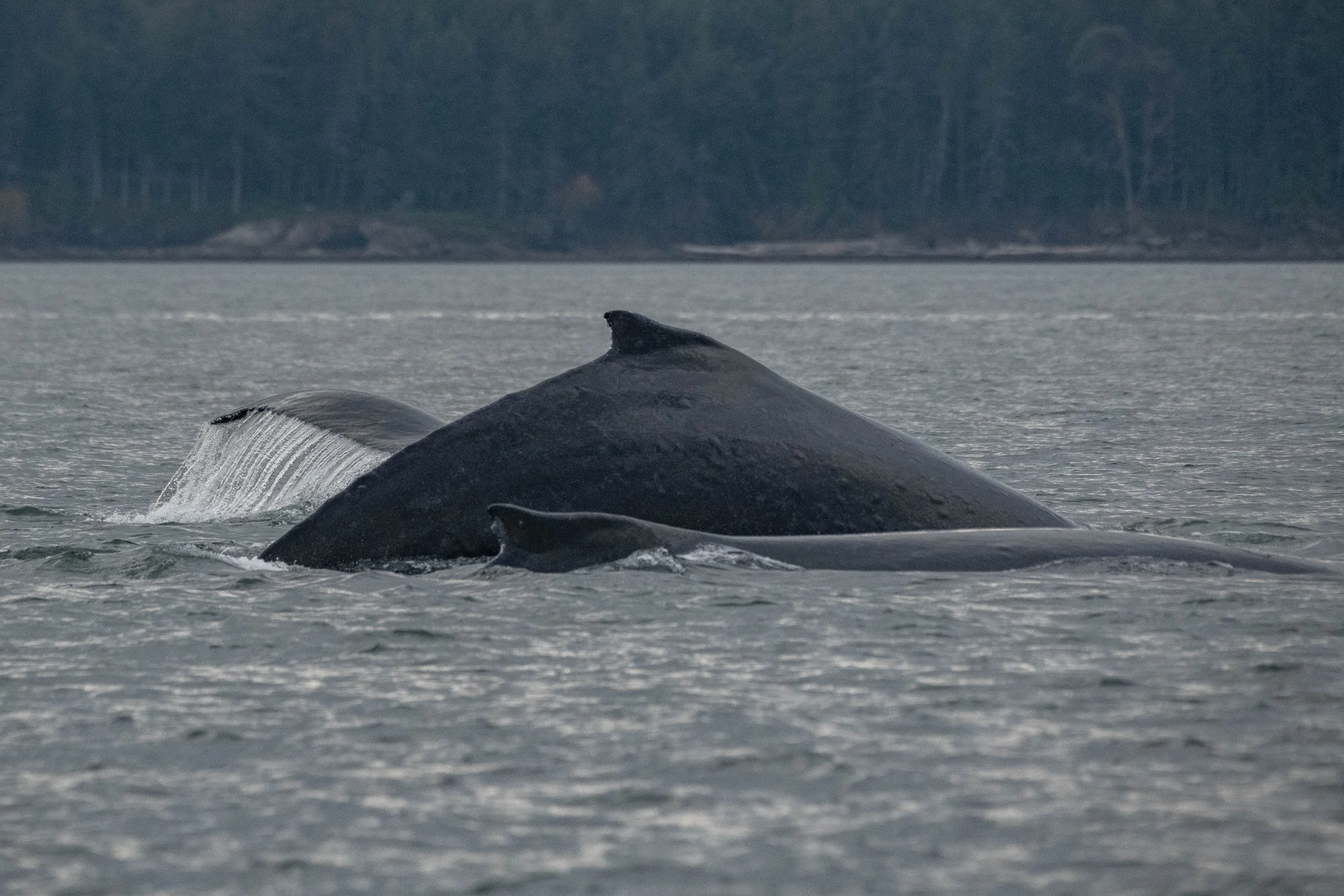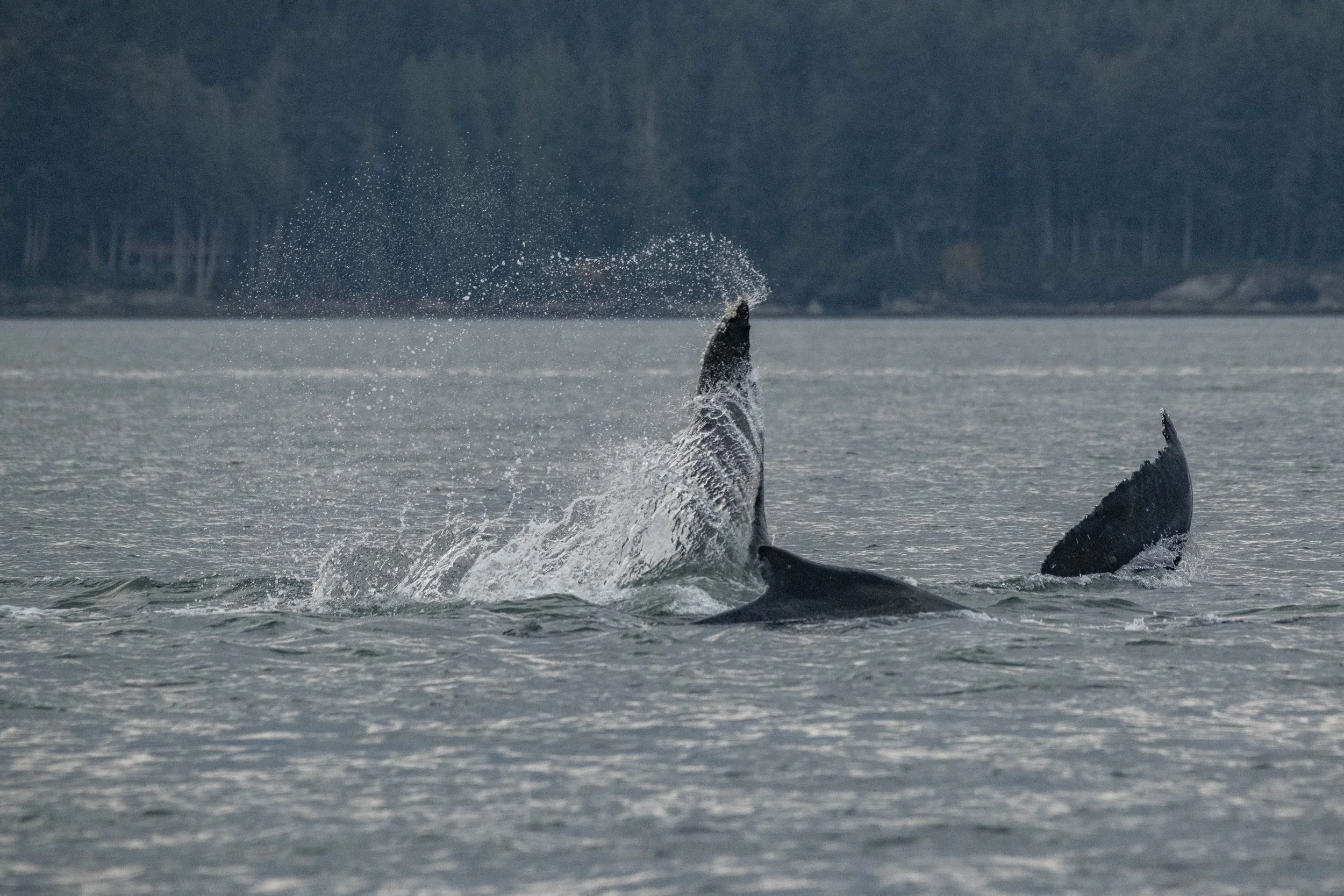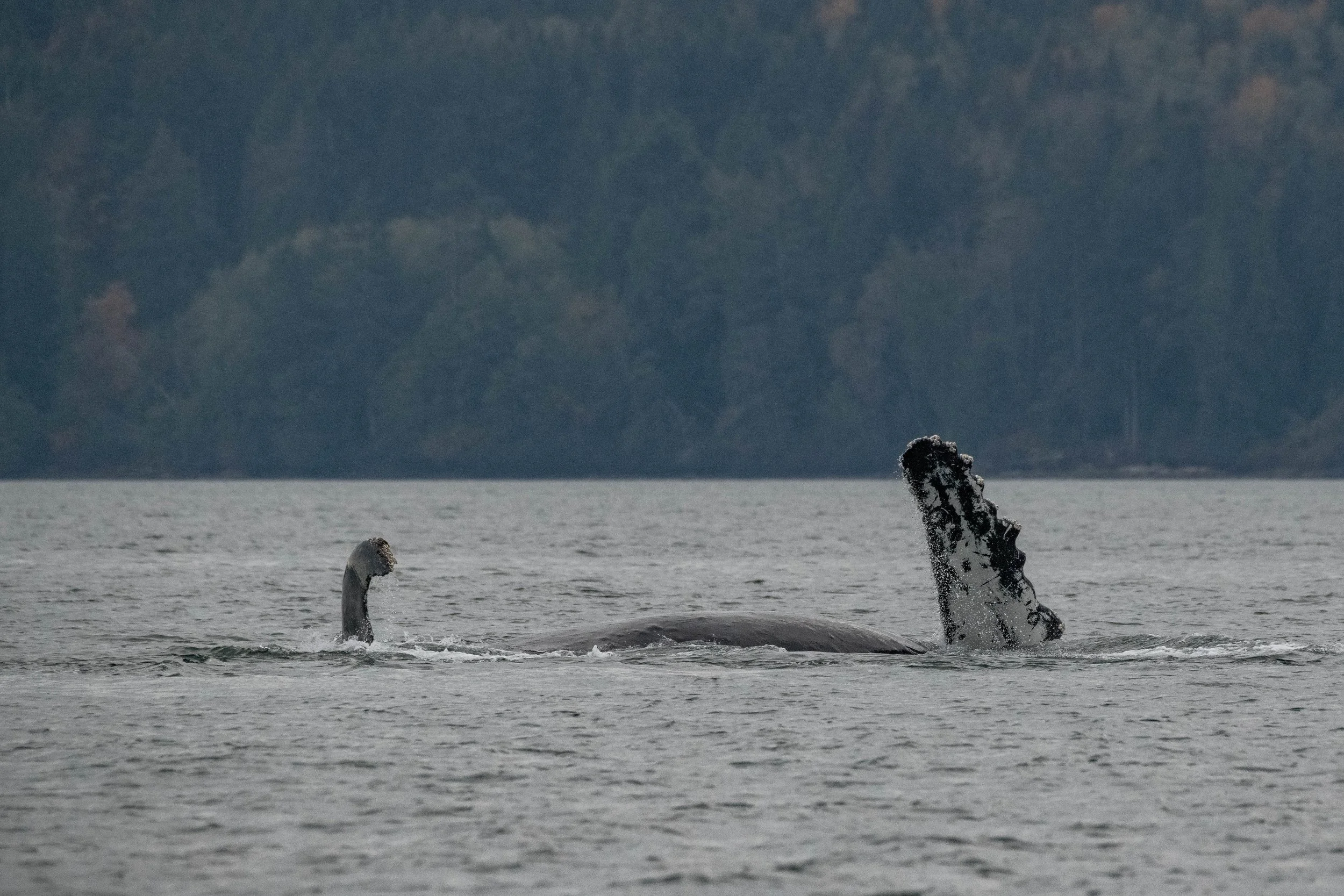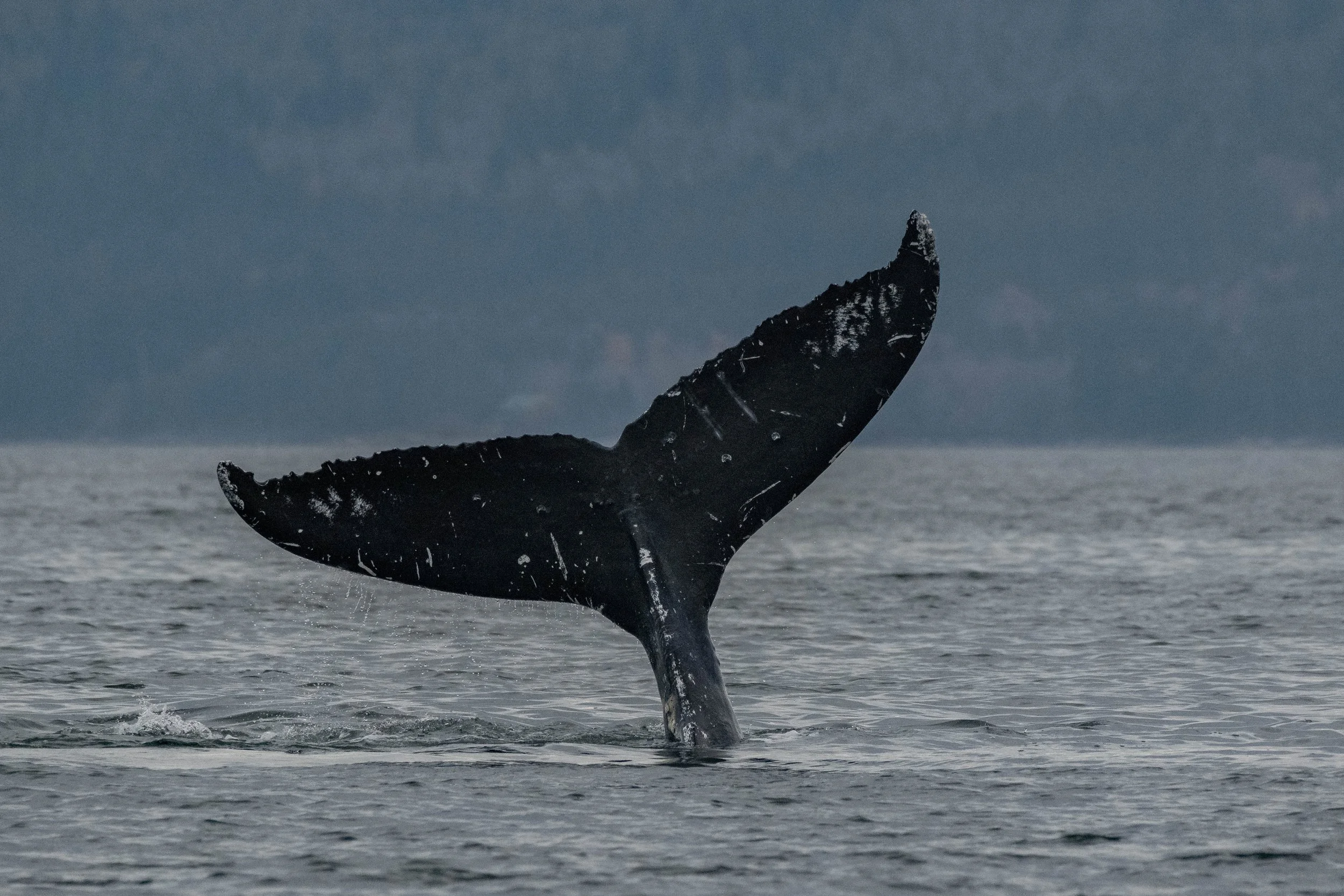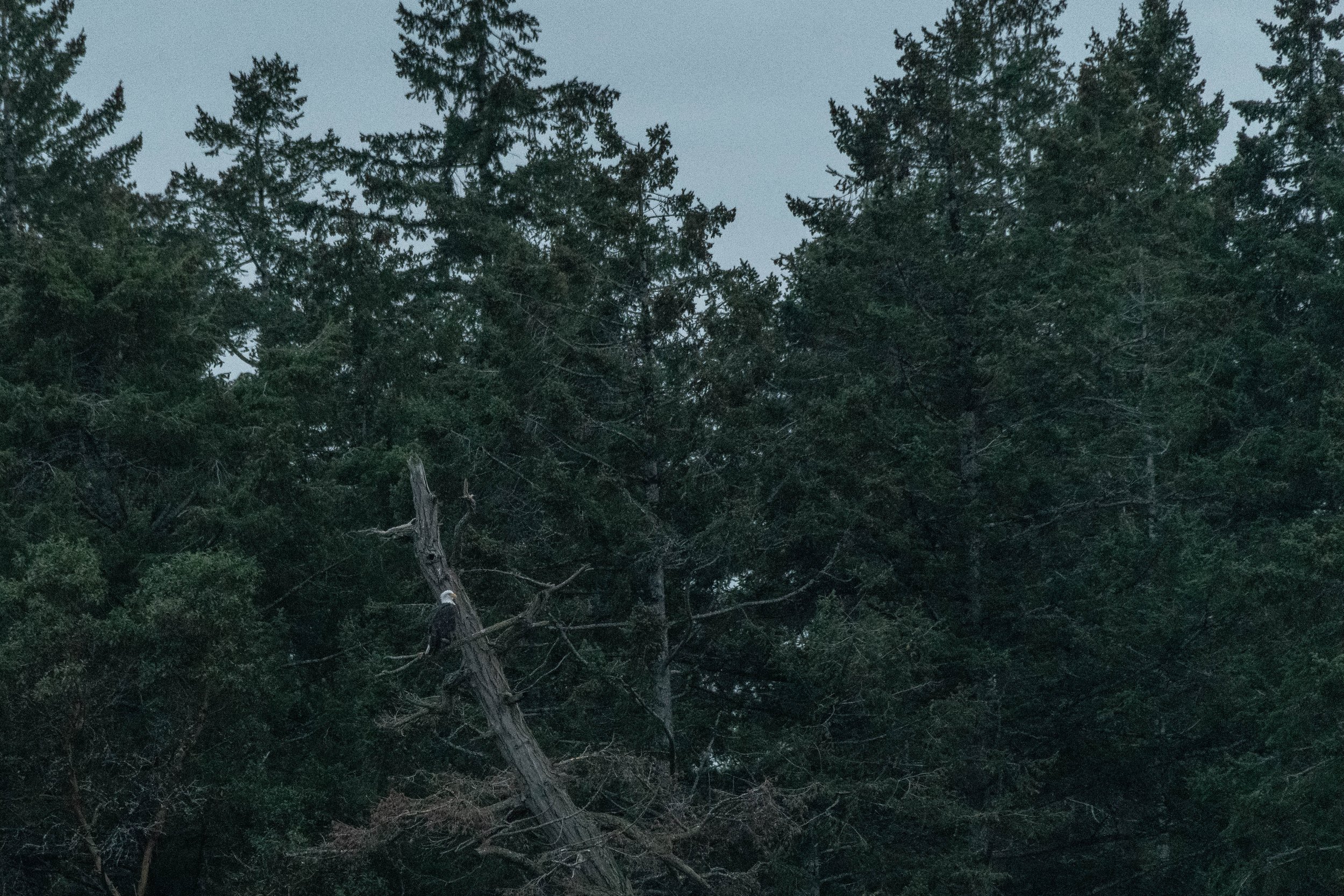November 7, 2024 - A day full of Giants!
It was another one of our beautiful, moody, West Coast days as we set off from Nanaimo Harbour in anticipation of what we may spot today! None of our whales are tagged chipped or tracked, so with our eyes peeled and hopes high we started our search in the Strait of Georgia. Our first blows were spotted just outside Polier Pass, a hot spot for Humpback activity this season!
These first two were Kraken/Monarch (BCZ0180) and Strike (BCX1675) travelling together and more than likely feeding to bulk up for their migration. Every year, from the chilly waters of the Pacific Northwest to the warm, serene lagoons of Hawaii, Mexico and Central America humpback whales embark on an incredible journey—a journey not only of migration but also of reproduction. For these giants, the breeding season is a time of fierce competition, elaborate courtship, and song. Humpback whales are renowned for their hauntingly beautiful songs, but their vocalizations are much more than mere melodies; they are central to how these whales find and compete for mates in the ocean's vast expanse. Humpback whale songs are one of the most fascinating behaviours observed in the animal kingdom. These songs, which can last for up to 20 minutes and are repeated for hours on end, are not just a form of communication—they are also a powerful tool for attracting mates. Male humpbacks sing their complex, patterned songs primarily during the breeding season in tropical and subtropical waters, where most humpbacks gather to mate. But why do males sing? While the precise reasons are still not fully understood, scientists believe that these vocalizations serve two key purposes: attracting females and signalling to rival males. The songs are thought to demonstrate a male’s strength, health, and genetic fitness. In this vast, open ocean, where visual cues are often limited, a well-performed song can be the difference between success and failure in finding a mate. Speaking of finding whales in the vast ocean it was time for us to leave Kraken and Strike to their travels and search for more blows!
We continued to explore the waters off of Galiano Island and in no time we spotted more iconic bushy blows of our Humpbacks. Not just a couple of blows this time, but many, seems we stumbled upon another hot spot. We were surrounded, and when we have multiple whales around with a lot of action it is more difficult to obtain all of the ID’s of individuals. We know that Sage (BCX2073), Graphite (BCX2077), Crescent (BCX1258), Bullet (BCX1658), Dandelion (BCY1107), Vanta (BCX1730) and Uluka (BCX1702) were among the mix. The best guess as to why these whales were so active is that they have had a chance to feed by this time of year and in theory, have calories to burn. It is also speculated that the hormones start to rev up as the migration gets closer. While the songs are an essential aspect of mate selection, humpback whales also engage in direct physical competition. Males may compete in "competitive groups", where several males will aggressively challenge each other for access to a female. These battles can involve ramming, pushing, and even tail-slapping—actions that require immense strength and endurance. In these encounters, the larger, more dominant males often have the advantage. However, it’s not always the biggest whale that wins. Males must also demonstrate stamina and strategic intelligence. Sometimes, it’s the most persistent male who gets the chance to court a female. Interestingly, these physical confrontations do not always result in a single victor. Females may choose to mate with multiple males throughout the season, leading to a dynamic and complex reproductive strategy.
Humpback whale breeding season is a time of music, rivalry, and courtship that spans vast distances across the world’s oceans. The male’s song is a pivotal part of the mating game, acting as both a siren call to potential mates and a warning to rival males. Whether through song or physical display, the humpback whale’s elaborate courtship rituals are a testament to the complexities of nature and the lengths these magnificent creatures will go to ensure the survival of their species. We have even documented them starting to sing right here in our waters both North of the Island and in Howe Sound, we are not sure what this means at this point, but again our best guess is the hormones are running rampant before their migration.
After an unforgettable day on the water, we headed back to the dock, taking in the setting sun’s peaceful lighting. The photos below were taken by Marine Naturalist Aly Kohlman throughout this
Kraken fluking with Vancouver in the background.
Strike’s chunky dorsal fin.
Strike preparing to dive.
Can you see all the pink in the water? Strike had a poop!
Fluke waterfall!
Majestic snow topped Mt. Baker.
Graphite’s tail as he dives.
Sage swinging around that tail.
Crescent diving.
Bullet’s recognizable dorsal fin.
Bullet showing off her tail.
Dandelion with a sideways fluke.
Vanta surfaces as Dandelion dives.
Dandelion with a fluke waterfall with Vanta diving beside and Uluka in front.
Tossing some water!
A big misty blow.
Uluka’s dorsal fin with Vanta’s tail.
Tails up!
Tail flick.
Swimming sideways with a pectoral fin out of the water.
Beautiful blow!
A rostrum sticking out.
Dandelion with a high fluke.
The front of the tail.
Some more tail swinging.
Uluka diving.
Steller Sea Lions on the log booms.
Watching us back.
Can you spot the bald eagle?


